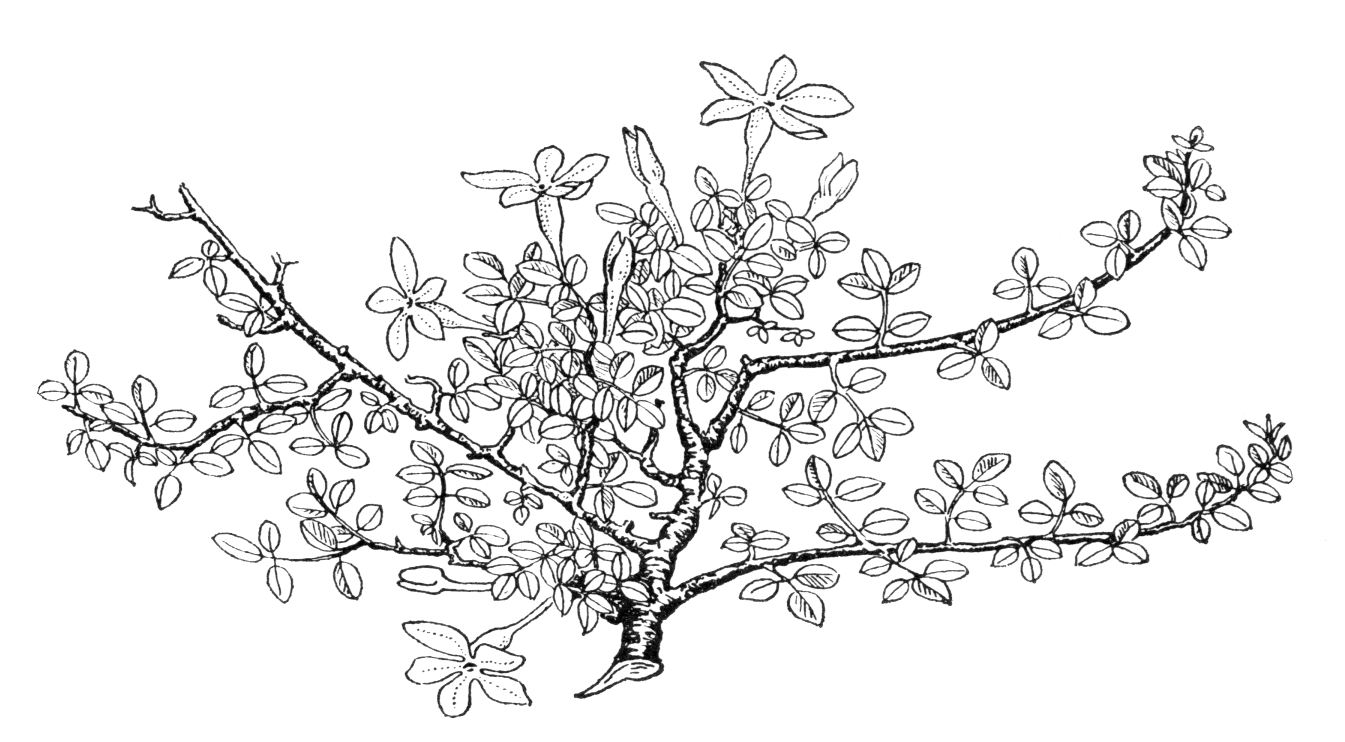Jasminum parkeri
Credits
Article from Bean's Trees and Shrubs Hardy in the British Isles
Recommended citation
'Jasminum parkeri' from the website Trees and Shrubs Online (treesandshrubsonline.
Genus
An evergreen shrub from 6 to 12 in. high, young shoots grooved, very minutely downy, becoming glabrous. Leaves alternate, pinnate, 1⁄2 to 1 in. long, made up of three or five leaflets. Leaflets oval or ovate, pointed, tapered at the base, not toothed, stalkless, 1⁄8 to 3⁄8 in. long. Flowers yellow, solitary or two together, terminal or produced from the leaf-axils. Corolla-tube slender, 1⁄2 to 3⁄4 in. long, 1⁄2 in. across the six spreading lobes. Calyx cup-shaped, scarcely 1⁄8 in. long, minutely downy, five-ribbed and with five awl-shaped lobes. Fruits 1⁄6 in. wide, two-lobed, globose, greenish white, translucent.
This species was discovered by R. N. Parker in 1919 in the upper basin of the river Ravi, in what was then the Indian State of Chamba, now part of Himachal Pradesh, and was introduced by him in 1923. Parker observed that it flowers in June (as it does also with us) and grows on rocks or hot, dry banks. Except when trailing over a rock it is never more than 12 in. high. It is a curious little jasmine, often forming in the wild a ball of densely packed twigs a few inches wide. Under cultivation, with better soil, it grows more freely, and makes a charming little shrub for the Alpine garden. Quite hardy at Kew. Its dwarf habit and usually solitary flowers make it very distinct. The plant at Kew, set at the top of a vertical rock-face about 5 ft high, has formed a curtain of pendent leafy growth reaching to the stream at the base of the rock, and about 8 ft wide.

